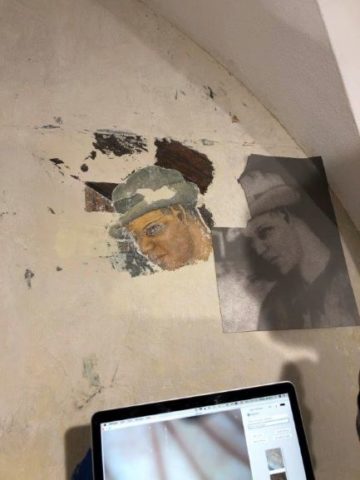
| Originally published by the Marina Times San Francisco in January 2020
The San Francisco Art Institute was awarded a $94,000 Save America’s Treasures grant to restore and conserve two New Deal-era frescoes located at SFAI’s campus in the North Beach neighborhood. The Works Progress Administration (W.P.A.) was founded in 1935 to provide financial relief to artists during the Great Depression. The Federal Art Project was a division of the W.P.A. dedicated to visual art. This project created more than 200,000 works, building a legacy of public art in the United States. “SFAI played a central role advancing the fresco as an art form in the United States in the 1930’s,” said SFAI President Gordon Knox. “SFAI faculty members brought Diego Rivera and Frida Kahlo to San Francisco for Diego’s first commission in the U.S., the incredible The Making of a Fresco Showing the Building of a City, which is open to the public seven days a week at our 800 Chestnut Street campus. Rivera’s presence in San Francisco stimulated the West Coast muralist movement. SFAI began to offer courses in fresco painting and turned classrooms and walls over to the exploration of the form. Nearly all of the 26 artists who worked on Coit Tower were affiliated with SFAI.” In 2013, SFAI’s VP of Operations & Facilities, Heather Hickman Holland, noticed ghostly traces underneath the walls of a corner hallway. After closer examination it became apparent that the traces indicated figures and buildings – a painting underneath the whitewash. After research of the Institute’s archives, Holland identified at least six of these lost frescoes throughout the building. Marble Workers (1935) has been positively identified as a painting by Frederick Olmsted. Also called Marble Workers at Fisherman’s Wharf, the fresco measures ten feet high and nine feet wide, and depicts a group of nine men at work in the Musto Marble Works just blocks from SFAI. A grand-nephew of Frederick Law Olmsted, Frederick Olmstead had previously completed a mural called Power at Coit Tower. The sociopolitical experience of the working class informs the artwork of the Social Realism movement. As a reaction to the hardships experienced between World Wars, Social Realism depicts workers as symbols of power and strength. “Making the ‘lost frescoes’ visible and accessible for the first time since the New Deal era will help further illuminate the stories, experiences and ethos of the Bay Area public mural artists at an important time in our collective history,” Knox says. “This extraordinary project will allow students, faculty and visitors from around the world to experience the work in the context of other Social Realist murals of the time.” Marble Workers has been hidden for nearly seventy years and was likely whitewashed in the 1940’s. Though it is unclear why the frescoes were painted over, the practice is surprisingly common. Miscommunication during renovations is often the culprit, with painters who are not instructed what areas to paint and what to leave alone. Also, frescoes become damaged over time, and painting over them becomes an option measured against the cost of restoration. The public perception of the murals’ value may also have changed over time. Social Realism was no longer in fashion after the 1940’s, when Abstract Expressionism became the popular painting style. The first phase of restoration, the conservation assessment, was completed in 2015. Marble Workers and a second fresco called Lost Fresco #6 are the current subjects of this restoration. Lost Fresco #6, according to conservators, may have been painted by a woman as were two other SFAI frescoes by Marjorie Eakin (Sabre) and Eleanor Bates (Streloff). Archives show that several murals on campus were completed by female artists including Suzanne Scheuer and Una McCann. Located on the northern entrance to the campus, Lost Fresco #6 is the largest mural on campus second only to the Diego Rivera mural. Established in 1998, the Federal Save America’s Treasures program has provided $328 million from 1999 to 2017 to provide preservation and conservation on more than 1,300 nationally significant collections, artifacts, structures and sites. Requiring a dollar for dollar private match, the grants leveraged more than $377 million in private investment, and contributed more than 16,000 jobs to local and state economies. In 2018 Congress appropriated funding from the Historic Preservation Fund (HPF), using revenue from federal oil leases for assistance toward preservation without expending tax dollars. The current disbursement is from the 2018 appropriation and will result in 41 preservation projects in 23 states. The New-Deal frescoes represent an important era in the history of the United States, and the Save America’s Treasures grant will facilitate the city of San Francisco reclaiming what was lost through preserving the history of WPA artists. |